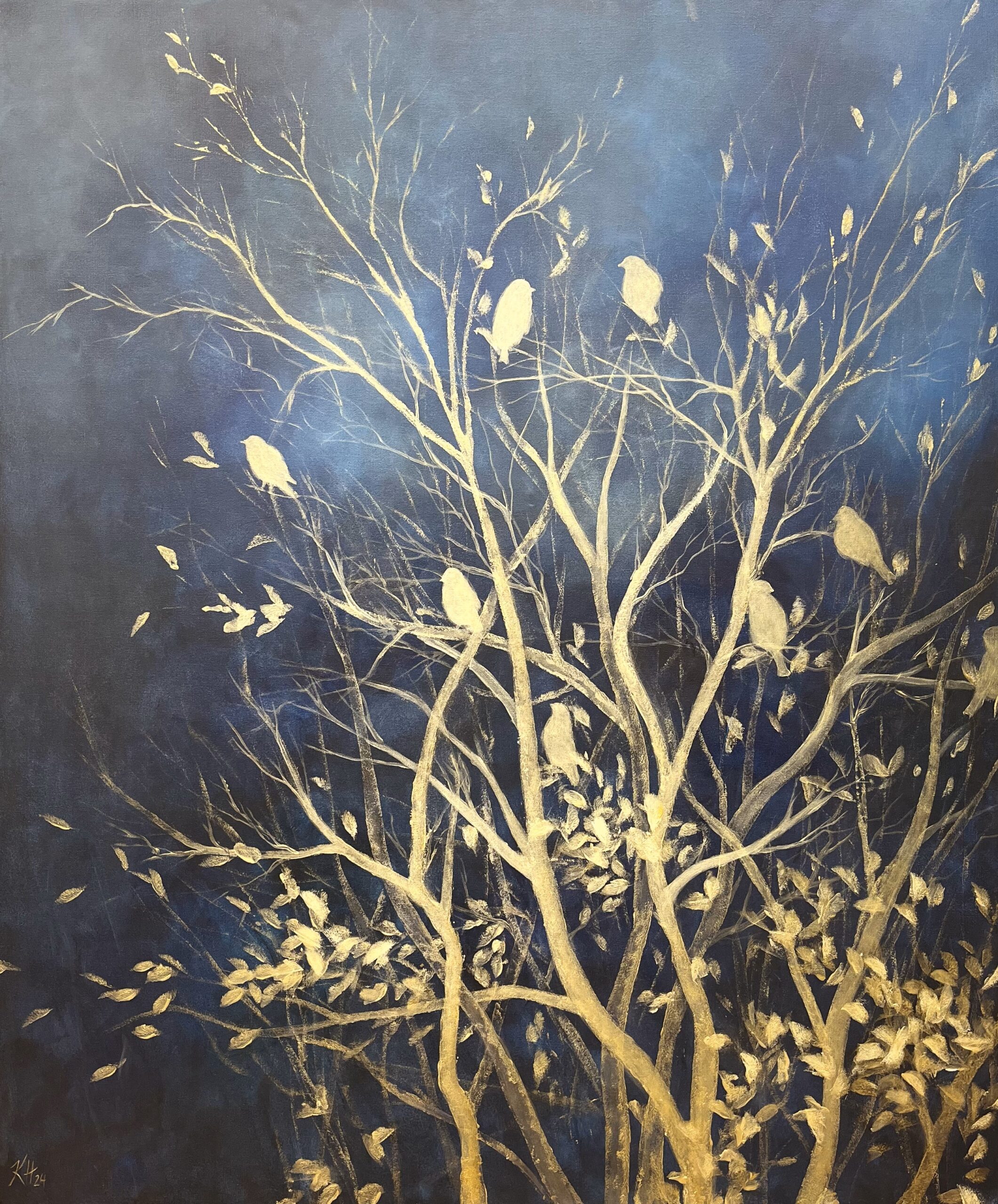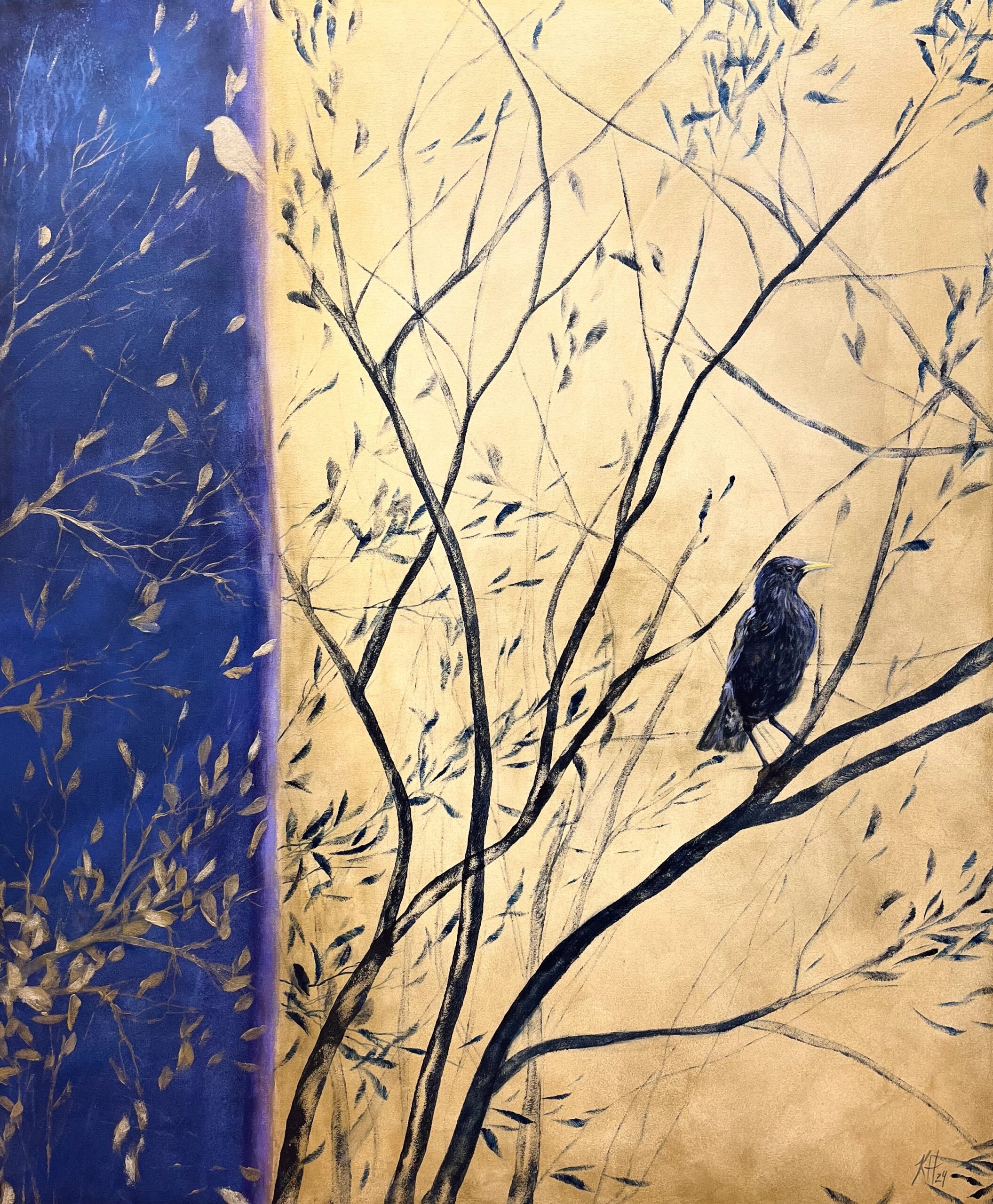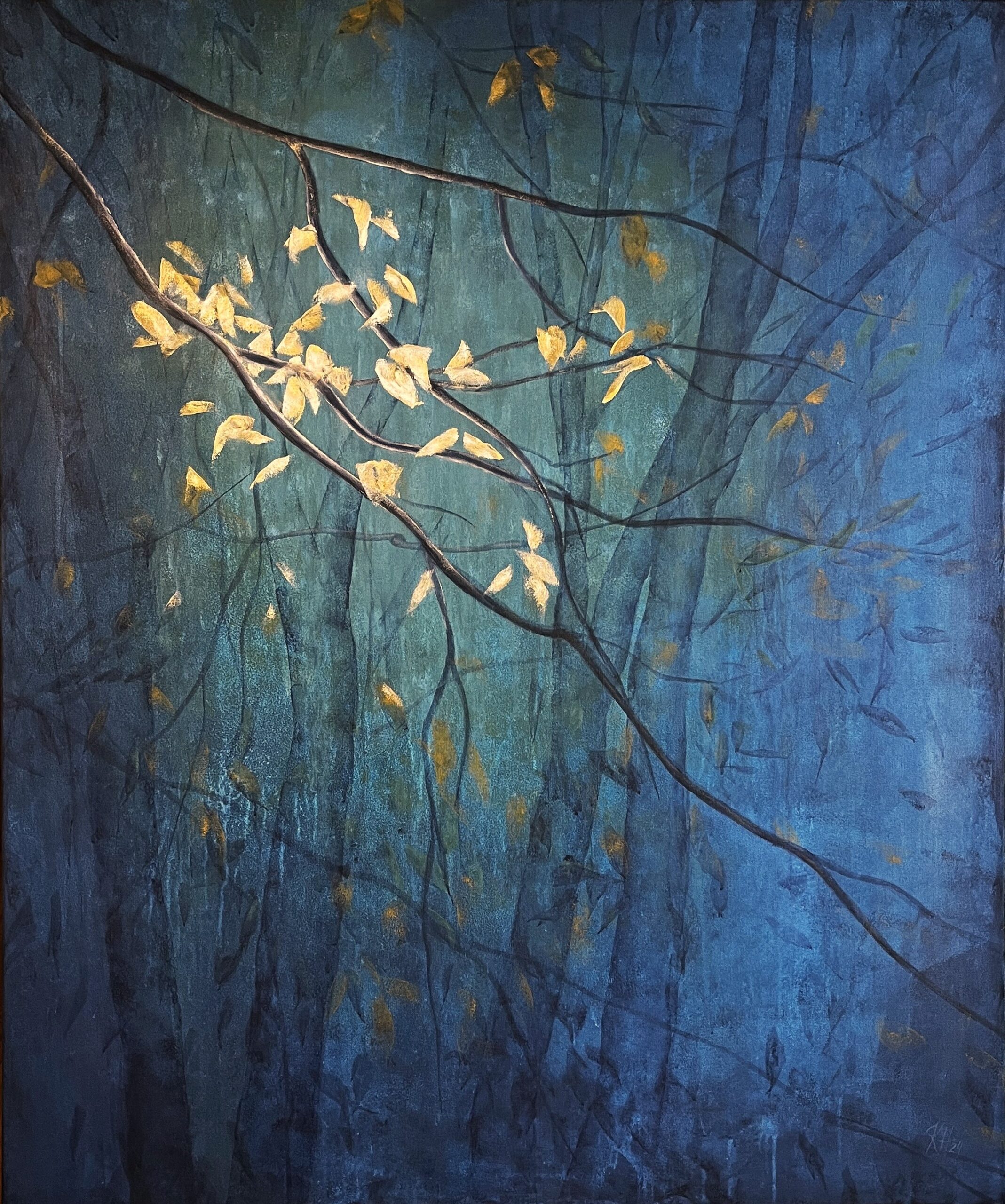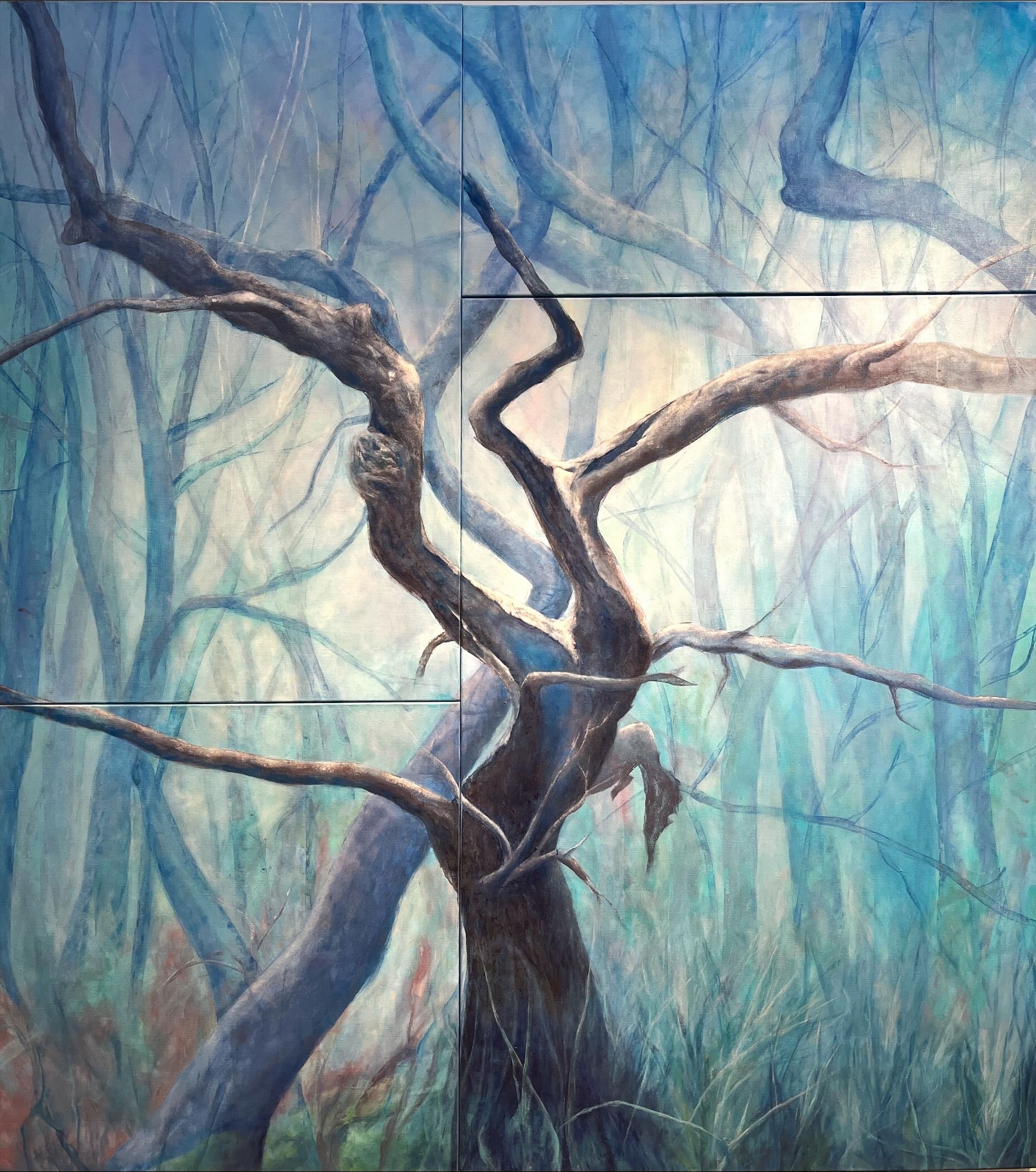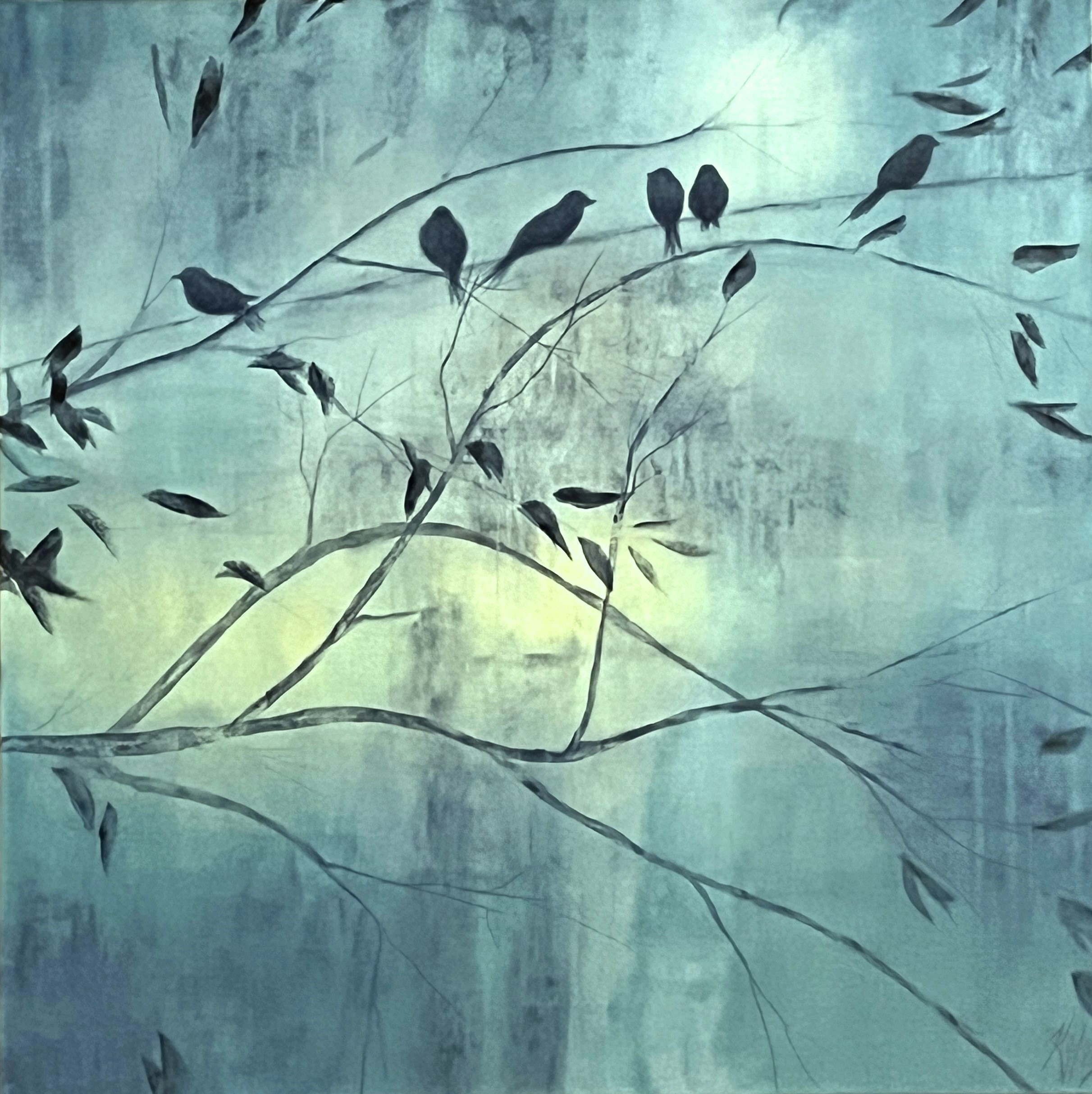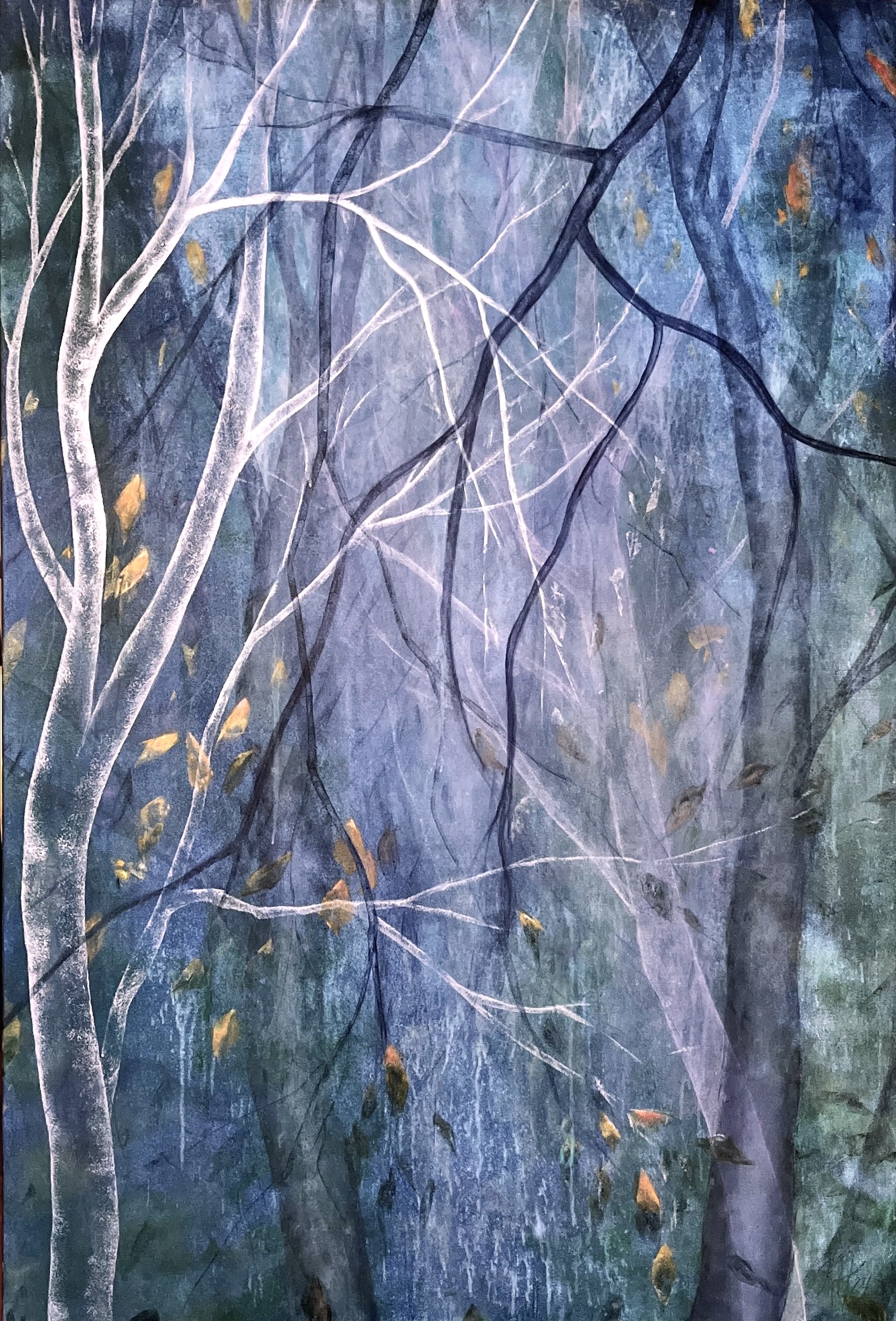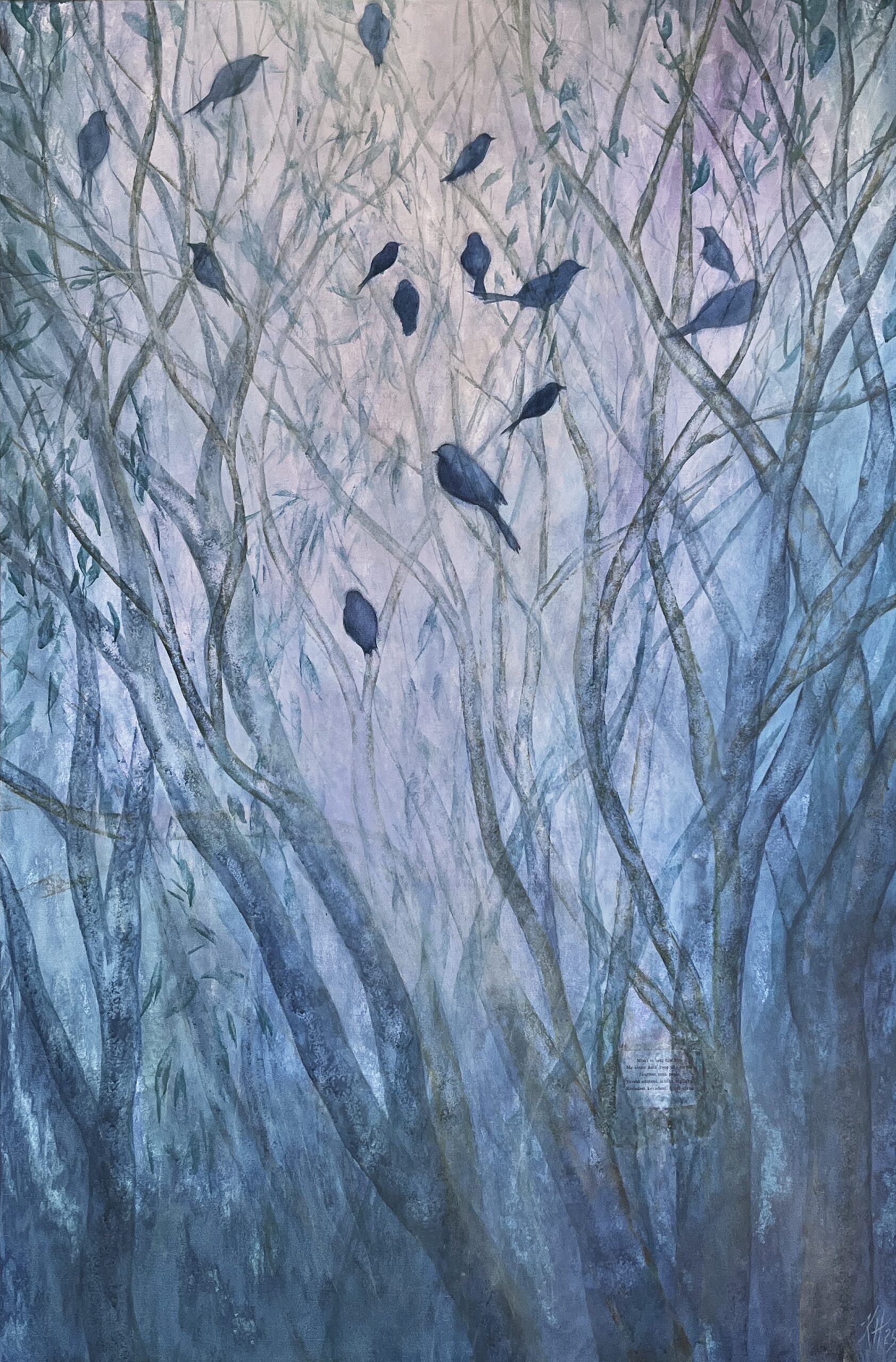Acrylic paintings are created on primed canvas using acrylic paints. The canvas is stretched over a wooden frame, allowing you to hang your new artwork directly on the wall. If desired, the painting can also be framed.
A finished acrylic painting can resemble both watercolor and oil paintings. When acrylics are diluted with water, they can create effects similar to watercolors. At the same time, they can be used to build up thick, textured layers, with the addition of gels and modeling pastes, to resemble oil paintings.
Acrylic paint is a synthetic emulsion paint, with acrylic polymer resin ,as its binder. Due to the binder’s properties, acrylic paint is water-soluble when wet but becomes an elastic, water-resistant film that does not yellow when dry. It can replace both oil and watercolor paints as well as tempera.
The first acrylic binders were developed in the In the 1950s and have been continuously improved. Acrylic paints began to be widely used starting in the from the 1960s. The colors of acrylic paints are vivid and striking, and due to their chemical composition, acrylic are also flexible, have good covering properties, and do not fade. The paints can be thinned with water, but only before painting. Once dry, the paint cannot be thinned with water. Thin to medium-thick layers of paint dry within 5–30 minutes and can be painted over immediately after drying.
Õlimaal Oil paintings are created with oil paints on a primed surface (e.g., wooden panel, canvas, copper plate, plywood, cardboard, etc.). Traditionally, dry oil paintings are covered with varnish. As early as the 14th century, Cennino Cennini described painting techniques using tempera paints covered with thin layers of oil. By the height of the Renaissance, oil painting had almost entirely replaced tempera painting across Europe. While early oil paintings were panel paintings on wooden surfaces,
around the end of the 15th century, canvas became the most popular painting surface due to its lower cost, ease of transport, and suitability for larger works. Since the 18th century, oil painting has been the dominant painting technique worldwide.
Õlivärv Oil paint is a liquid or paste-like paint consisting mainly of pigment and an oil binder, which becomes solid upon exposure to air. The primary binder is plant oil (linseed, walnut, poppy oil, etc.). The paint tube was invented in 1841 by portrait painter John Goffe Rand, replacing the previously used pig bladders and glass syringes. The capped tube preserved the paint better, offering flexibility for outdoor painting.
Differences Between Acrylic and Oil Paints
Oil paints use linseed oil or another drying oilas a binder, whereas acrylic paint is a water-based emulsion (suspension) of acrylic polymer resin that acts as the binder. Therefore, oil paint is described as “oil-based,” while acrylic paint is “water-based.”
The main practical difference between oil and acrylic painting is drying time. Oil paintings take significantly longer to dry, often a couple of weeks or more. Additionally, oil paintings have a glossy finish, whereas acrylic paintings usually have a matte finish. The surface of an acrylic painting can be made glossy with various protective varnishes. Both acrylic and oil paints can be used to create textured effects.
Oil paints require solvents based on turpentine for cleaning brushes, which can be moderately toxic. Over time, oil paints may gradually yellow, brown, and lose flexibility, leading to cracks in the paint film. Since acrylic paint is highly flexible when dry, it prevents cracking.
Acrylic paints are easy to use in mixed media, as pastels, oils, chalk, charcoal, and pencils can be applied over dried acrylic surfaces. It is also possible to mix in other materials like sand, rice, and even pasta when painting with acrylics.
Today, many artists prefer to use acrylic paints alongside oil paints due to their flexibility, versatility, and durability.
- Everything
- It's a matter of taste
- Floral
- Ephemeral
- Swamp Voices
- Border trees
- Winter
- Abstract

